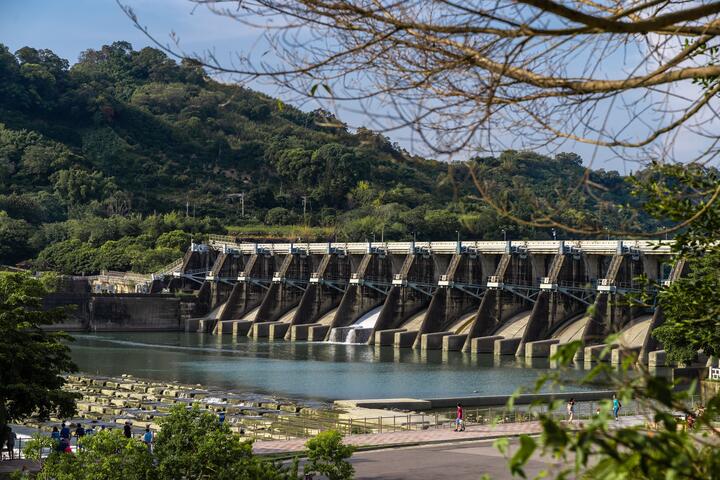Shigang Dam Introduction
Shigang Dam is located at the lowest part of the Dajia River and is responsible for providing water for the livelihoods of the Taichung area. In 1954, the Ministry of Economic Affairs, along with relevant agencies, formed the "Dajia River Project Committee" to promote multi-objective development such as irrigation, power generation, and flood control. In addition to constructing several power plants, dams were built in the lower reaches of the watershed to regulate the tailwater of each power plant. The Shigang Dam was proposed by the former Water Resources Planning Commission of the Ministry of Economic Affairs in 1959 and construction began on October 31, 1974, being completed on October 15, 1977. The Shigang Dam is a concrete gravity dam completely designed and constructed by locals. Since its completion, it has supplied public water, industrial water, agricultural irrigation water, and Taichung Port shipping water to the greater Taichung area and parts of Changhua County, which is closely related to the economic development of central Taiwan. After the Jiji earthquake on September 21, 1999, the area around the Shigang Dam experienced uplift and displacement, leading to damage to some facilities due to the terrain, challenging its water diversion and storage functions. The government actively undertook repair and restoration projects, successfully stabilizing water supply and injecting new vitality into the Shigang Dam. With the cooperation of the Water Resources Agency and the Central Region Water Resources Bureau, emergency repairs quickly resolved water supply issues in the Taichung area, and further short-term, medium-term, and long-term plans for post-disaster recovery of the Shigang Dam were formulated and executed in sequence. By the end of 2000, all emergency repair projects were completed, and by the end of 2001, a newly constructed fishway was also completed, transforming the Shigang Dam's appearance and enabling a fresh start after the earthquake. (This article is adapted from the website of the Shigang Dam Management Center, Central Region Water Resources Bureau, Ministry of Economic Affairs)


























